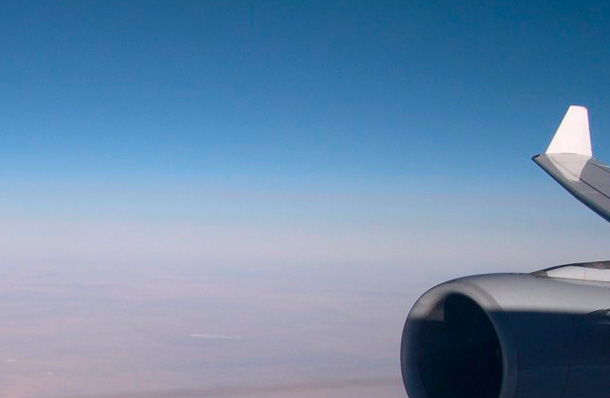 |
 |
 |
 |
||
 |
| Gobi Desert Opposition Glow ~ Imaged by Philip Laven (Optics of a water drop). ©Philip Laven, shown with permission "Here is an example of [an opposition glow] just taken whilst flying over the Gobi Desert (much beloved from old school atlases). As usual, the image contrast is less than that observed with my own eyes - in fact, the bright spot was extremely bright on this occasion.
To make this a really "nerdy" occasion, I have decided to send it to you immediately via the aircraft's free WiFi." I opened my mail an hour after Philip took the picture but confess that it has taken a little longer to reach the OPOD screen.
|
 |
 |
 |
 |
||
 |

| About - Submit | Optics Picture of the Day | Galleries | Previous | Next | Today |
| There are so many optical effects at the antisolar point (ASP) that Philip took care with identification. The orange brown shadow of the aircraft's contrail conveniently marked the ASP. Always look out for it if on the shadow side of an airplane. Sometimes the contrail shadow can be followed for hours slowly threading its way across the landscape. The directions of the dune shadows are other ASP pointers. The bright spot is very unlikely to be the centre of a glory because it is too small. Sometimes ice halos are seen around the ASP. The intersection of the subparhelic circle, diffuse arcs and Parry antisolar arcs forms a bright spot. However, cirrus below the aircraft is unlikely here and no other halo traces are visible. A heiligenschein? Dew occurs in deserts but an 'opposition glow' or 'dry heiligenschein' is the best explanation. Deserts on Earth, the Moon, Mars and asteroids exhibit opposition glows. Shadow hiding by stones and soil can make some contribution but there are additional ones from retroreflection by minerals and an effect called coherent backscattering. |